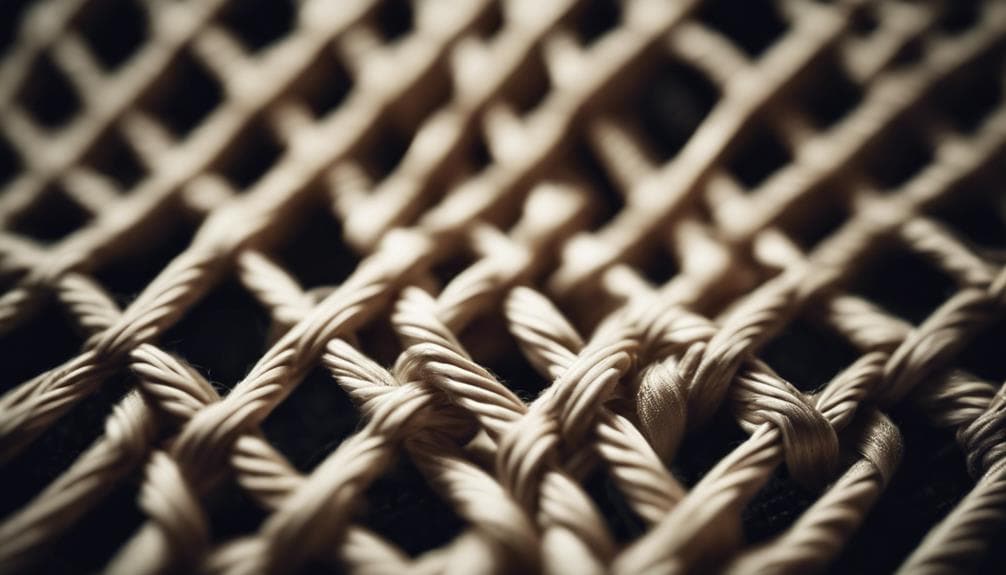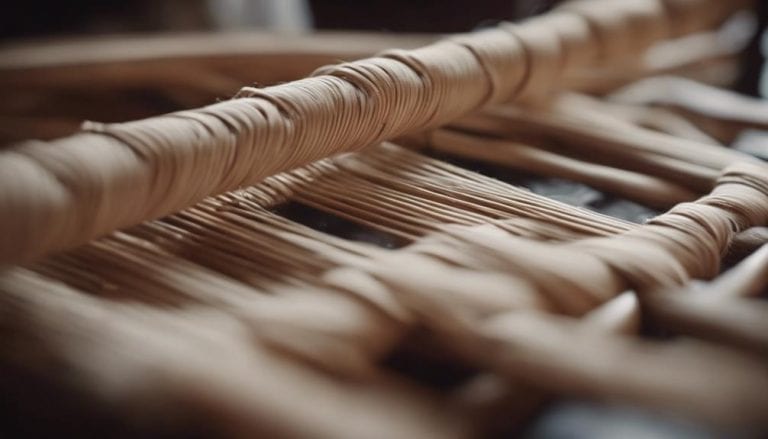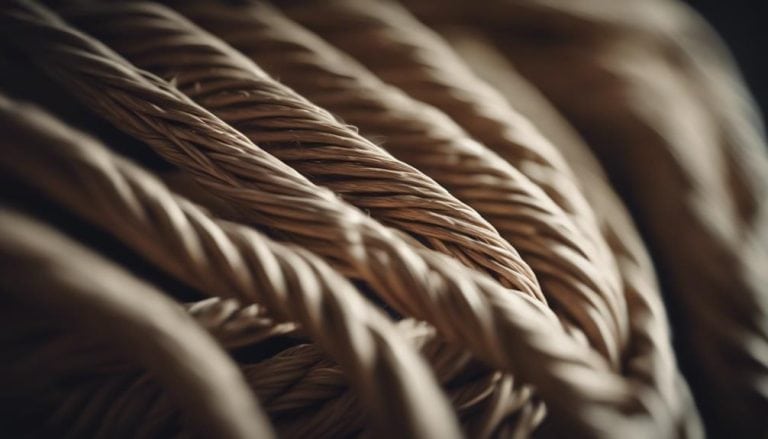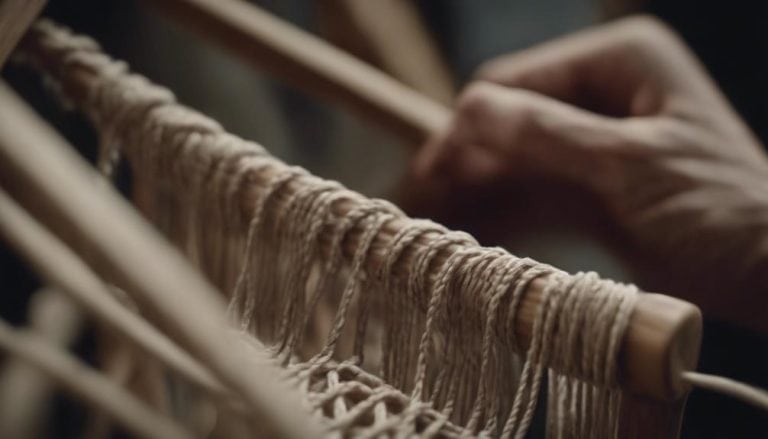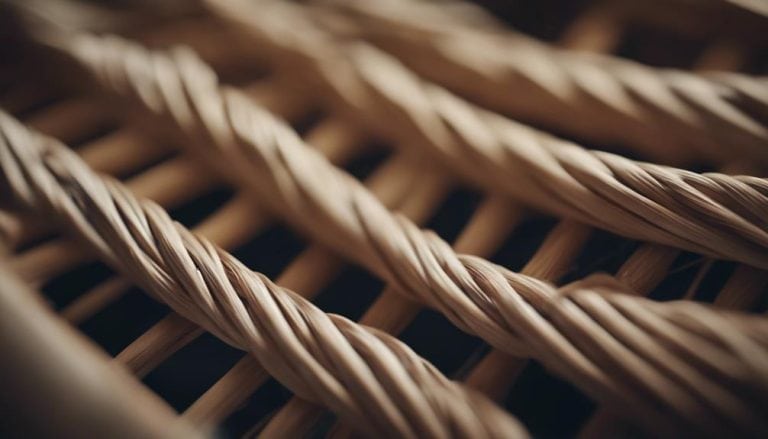Advanced Techniques in Danish Cord Weaving
Exploring the intricacies of Danish cord weaving reveals a world of advanced techniques beyond the basics. Did you know that mastering the art of twining can elevate your weaving to a whole new level? Understanding how to create intricate patterns and designs through strategic cord placement opens up creative possibilities.
As I delve into the nuances of these advanced techniques, you’ll discover how each knot and weave contributes to the overall strength and beauty of the final piece, making the journey truly rewarding.
Looking for advanced techniques in Danish cord weaving? Check out online tutorials and workshops for step-by-step instructions and expert guidance.
Key Takeaways
- Master complex Danish cord weaving patterns for enhanced design potential.
- Experiment with vibrant colors and mixed patterns to personalize pieces.
- Adjust tension and introduce varied textures for visual and tactile interest.
- Customize finishing techniques with decorative knots and natural fibers for bespoke elegance.
Intricate Knotting Patterns
When delving into the realm of Danish cord weaving, one must appreciate the intricacy of knotting patterns that demand precision and skill. The art of Danish cord weaving is a meticulous craft that relies heavily on tension control and pattern complexity to achieve stunning results.
Tension control is crucial in ensuring that the cords are neither too loose nor too tight, as this directly impacts the overall look and durability of the woven piece. Each knot and weave must be executed with care to maintain the integrity of the design. Pattern complexity further elevates the beauty of Danish cord weaving, with intricate arrangements of cords creating mesmerizing visual effects.
As one navigates through the weaving process, the challenge lies in mastering these complex patterns to bring out the full potential of the design. Through meticulous attention to detail and a deep understanding of the weaving techniques involved, one can truly appreciate the artistry and craftsmanship that goes into creating Danish cord woven furniture.
Advanced Weaving Techniques
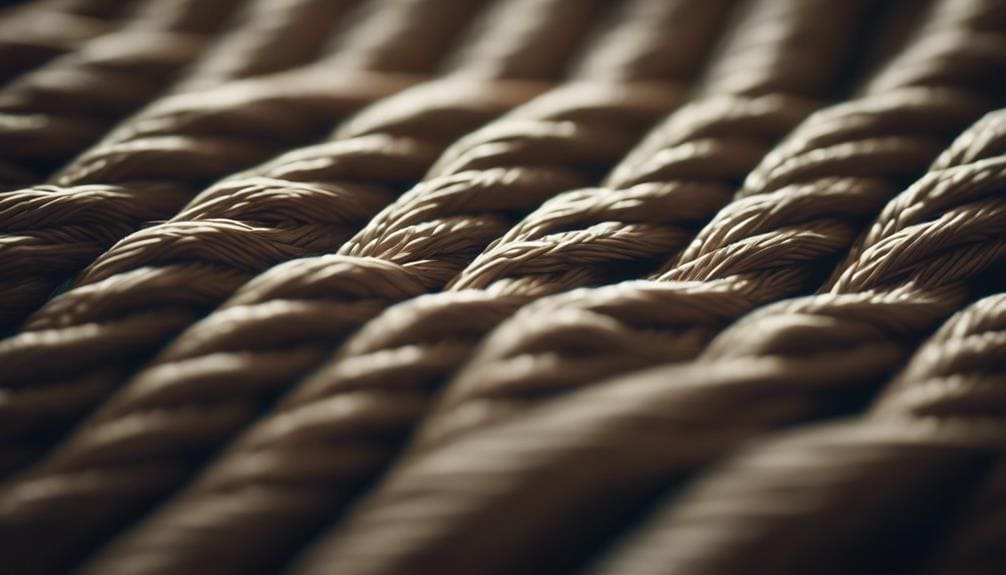
Mastering advanced weaving techniques in Danish cord weaving involves delving into intricate patterns like the woven envelope pattern seen in designer chairs, utilizing cow-hitch knots for cord direction reversal, incorporating weaving slots to prevent gaps, managing cords precisely to avoid shortages, and prioritizing workshop cleanup for optimal efficiency in tackling complex projects. When it comes to tension control, adjusting the tightness of the cords is crucial to achieving a uniform and professional look in the weave.
Material selection plays a vital role in advanced weaving, as different types of cord materials can impact the overall durability and aesthetic of the finished piece. Understanding how each material behaves and interacts with the weaving process is key to creating high-quality Danish cord projects. By mastering tension control and carefully selecting materials, we can elevate our weaving skills to tackle more intricate designs with confidence.
Incorporating Color Variations
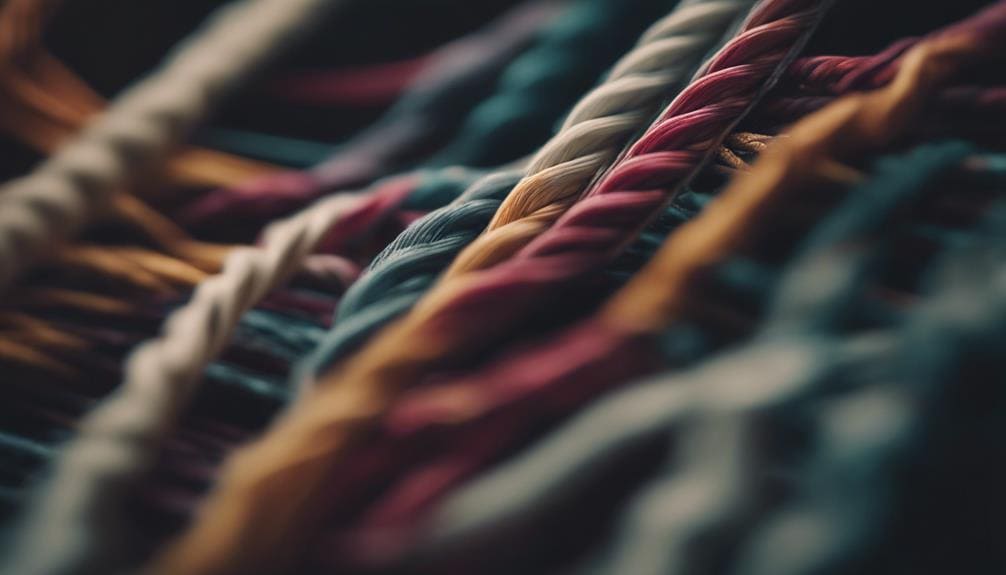
To enhance the visual appeal and design versatility of Danish cord weaving projects, incorporating color variations through different colored cords or mixed patterns is a creative and effective technique. Personalized designs and vibrant color combinations can truly elevate the overall look and feel of the woven piece, making it stand out as a unique and customized creation.
When experimenting with color combinations in Danish cord weaving, each choice can add a layer of personality to the furniture piece, allowing it to seamlessly blend in with existing decor or become a statement piece in its own right.
These vibrant color variations not only personalize the design but also highlight specific weaving techniques or patterns, bringing depth and dimension to the finished product. By incorporating these colorful elements, weavers can showcase their creativity and craftsmanship, making each Danish cord weaving project a true work of art.
Enhancing Texture and Dimension
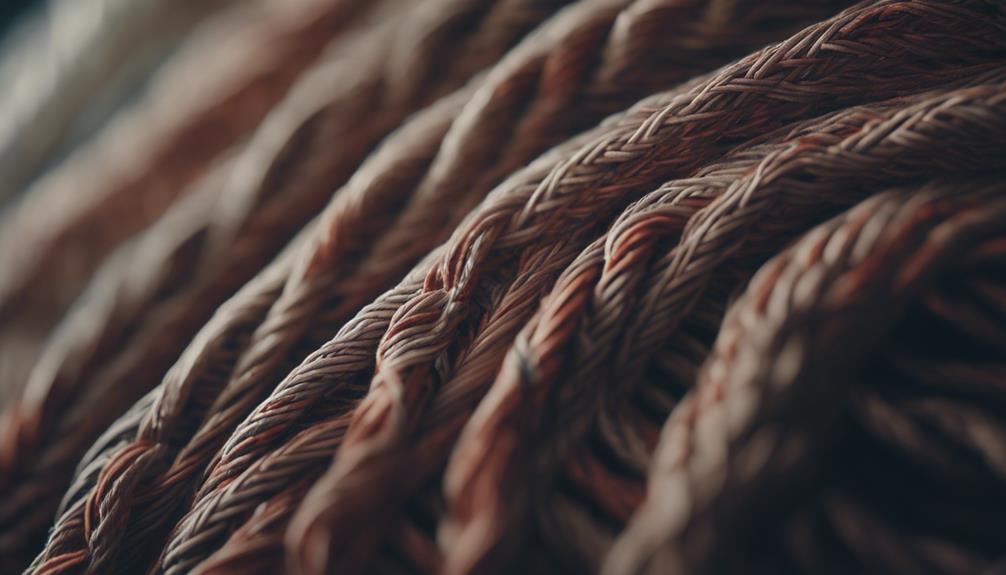
Exploring various techniques to enhance texture and dimension in Danish cord weaving opens up a world of creative possibilities for enriching the overall aesthetic and tactile experience of the woven pieces. Adding depth to the weave can be achieved by adjusting the tension while weaving, creating a dynamic surface that invites touch and visual interest.
Introducing intricate designs like twill or herringbone patterns can elevate the dimensionality of the woven seat, offering a sense of complexity and sophistication. By playing with contrasting colors or materials, we can craft a more visually striking piece with layers of depth that draw the eye in.
Experimenting with weaving densities and spacing opens the door to creating unique textures and patterns, adding richness and character to the finished work. Layering multiple cords or weaving techniques further enhances the complexity, resulting in a multi-dimensional and visually captivating surface that showcases the artistry of Danish cord weaving.
Innovative Finishing Methods
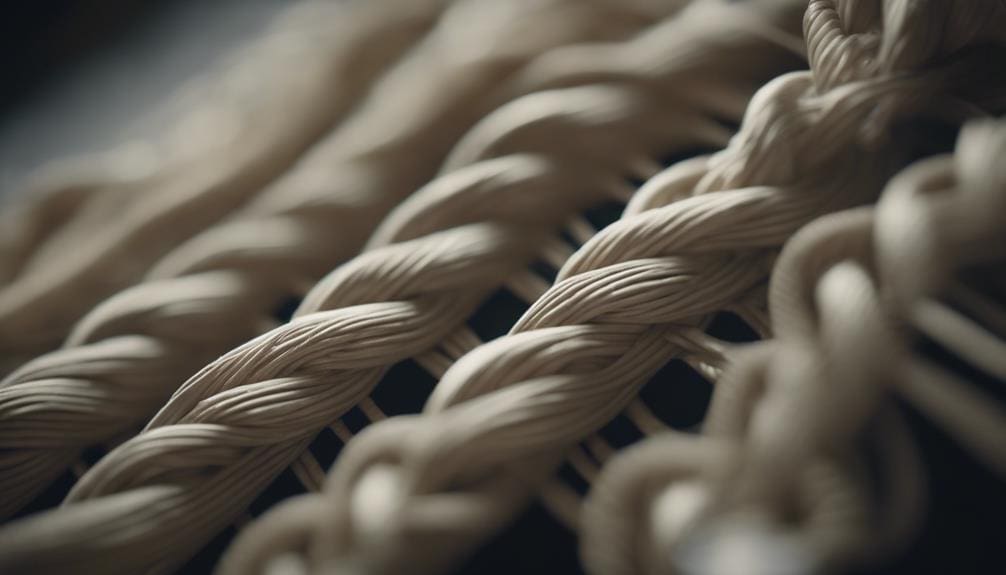
Utilizing innovative finishing methods in Danish cord weaving allows for the creation of unique and personalized touches that enhance the overall aesthetic appeal of the woven pieces.
When it comes to adding those final flourishes to your Danish cord creations, consider the following:
- Decorative Knots: Incorporating intricate decorative knots can add a touch of elegance and individuality to your weaving.
- Contrasting Colors and Patterns: Experimenting with contrasting colors or patterns within the weave can elevate the visual impact of the Danish cord seat.
- Custom Weaving Techniques: Playing around with different weaving densities and techniques enables crafting bespoke designs and textures tailored to your preferences.
- Natural Fibers Integration: Introducing natural or dyed fibers alongside Danish cord can infuse a creative and personalized element, making each piece unique.
Frequently Asked Questions
What Are the Different Types of Danish Cord Weaving?
When it comes to Danish cord weaving, there’s a beautiful blend of traditional and modern techniques. From intricate designs to simple patterns, each piece tells a unique story through the art of weaving.
Which Is Better Laced or Unlaced Danish Cord?
I prefer laced Danish cord for its traditional charm and decorative knots. However, unlaced cord offers a sleek, modern look without visible knots. The choice depends on the desired aesthetic and design style of the furniture piece, considering weaving techniques and decorative options.
How Do You Weave Danish Cord Without Nails?
When weaving Danish cord without nails, cord tensioning and alternative methods are key. Ensuring a snug cow-hitch knot secures the warp without nails. By mastering these techniques, intricate designs can be achieved seamlessly.
How Is Danish Cord Made?
Danish cord, a durable rope made of twisted paper, is crafted for furniture seats and backrests. Its history reflects a tradition of longevity and wear resistance. Production involves intricate hand weaving techniques, resulting in timeless designs.
Conclusion
As I complete my journey through the intricate world of Danish cord weaving, I am reminded of how each knot and weave is like a brushstroke on a masterpiece, adding depth and character to the final piece. Just as a skilled artist brings life to a canvas, a master weaver breathes life into furniture with precision and expertise. The art of Danish cord weaving is a timeless craft that truly stands the test of time.

